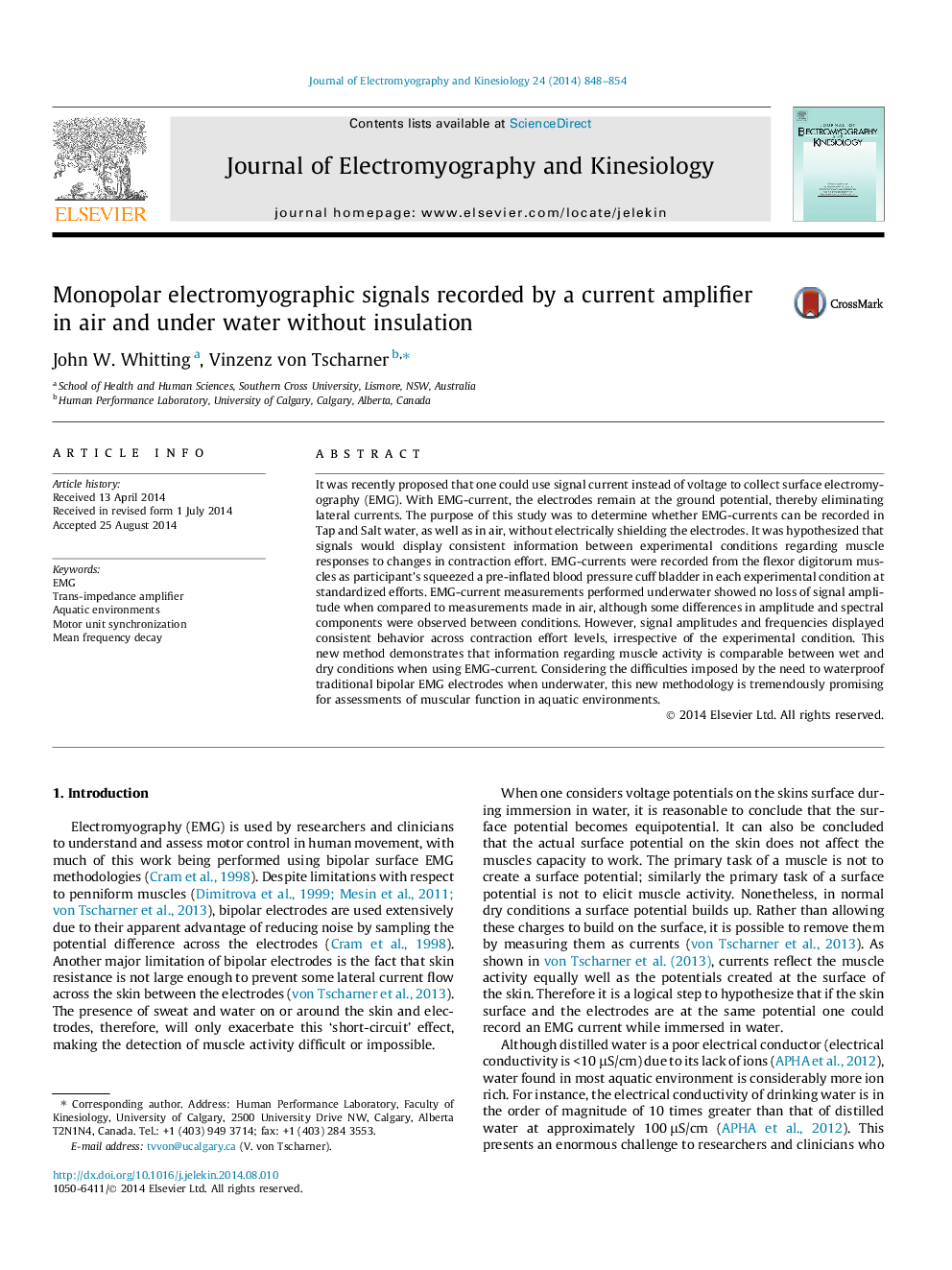| Article ID | Journal | Published Year | Pages | File Type |
|---|---|---|---|---|
| 4064463 | Journal of Electromyography and Kinesiology | 2014 | 7 Pages |
Abstract
It was recently proposed that one could use signal current instead of voltage to collect surface electromyography (EMG). With EMG-current, the electrodes remain at the ground potential, thereby eliminating lateral currents. The purpose of this study was to determine whether EMG-currents can be recorded in Tap and Salt water, as well as in air, without electrically shielding the electrodes. It was hypothesized that signals would display consistent information between experimental conditions regarding muscle responses to changes in contraction effort. EMG-currents were recorded from the flexor digitorum muscles as participant's squeezed a pre-inflated blood pressure cuff bladder in each experimental condition at standardized efforts. EMG-current measurements performed underwater showed no loss of signal amplitude when compared to measurements made in air, although some differences in amplitude and spectral components were observed between conditions. However, signal amplitudes and frequencies displayed consistent behavior across contraction effort levels, irrespective of the experimental condition. This new method demonstrates that information regarding muscle activity is comparable between wet and dry conditions when using EMG-current. Considering the difficulties imposed by the need to waterproof traditional bipolar EMG electrodes when underwater, this new methodology is tremendously promising for assessments of muscular function in aquatic environments.
Related Topics
Health Sciences
Medicine and Dentistry
Orthopedics, Sports Medicine and Rehabilitation
Authors
John W. Whitting, Vinzenz von Tscharner,
